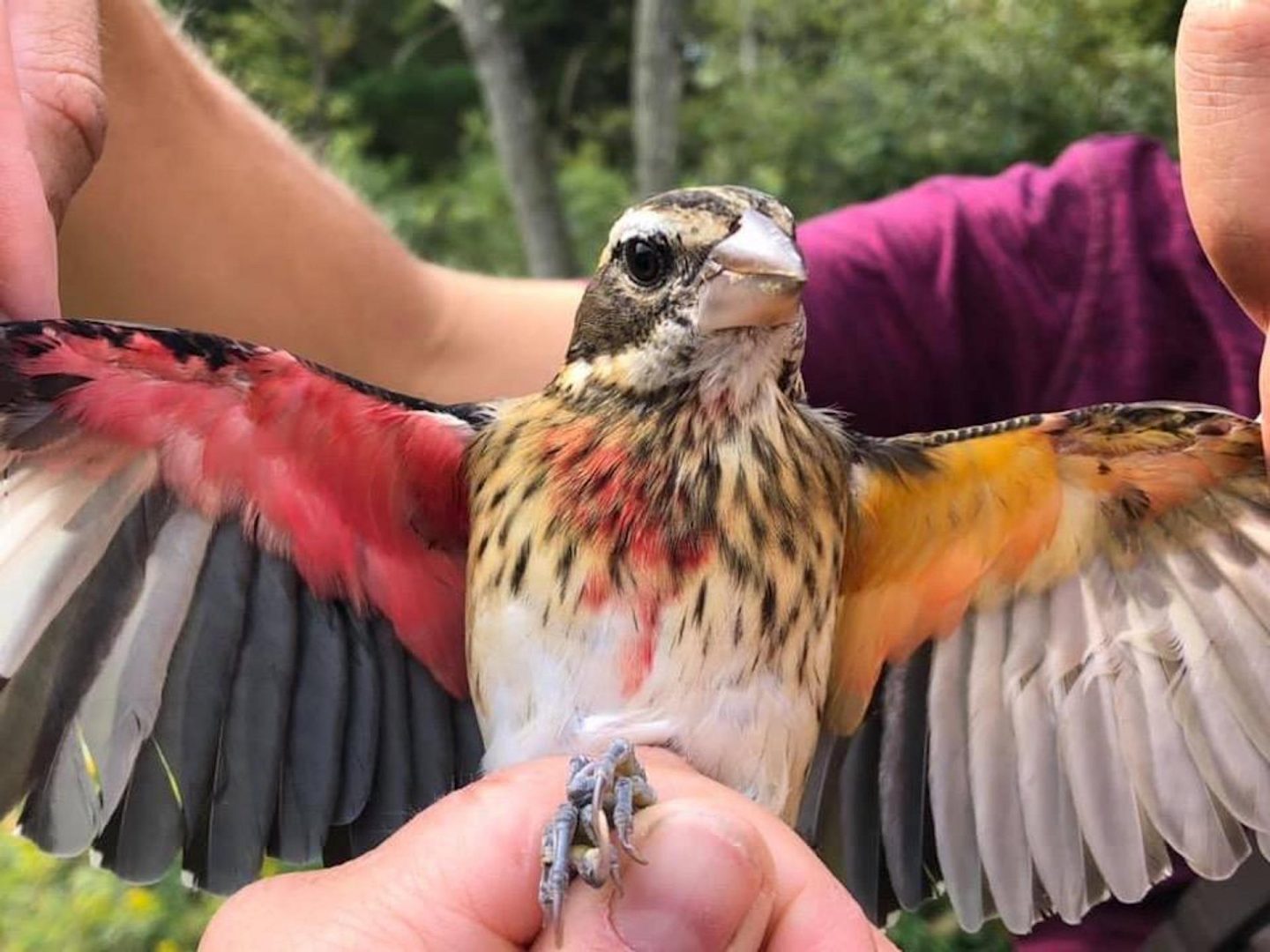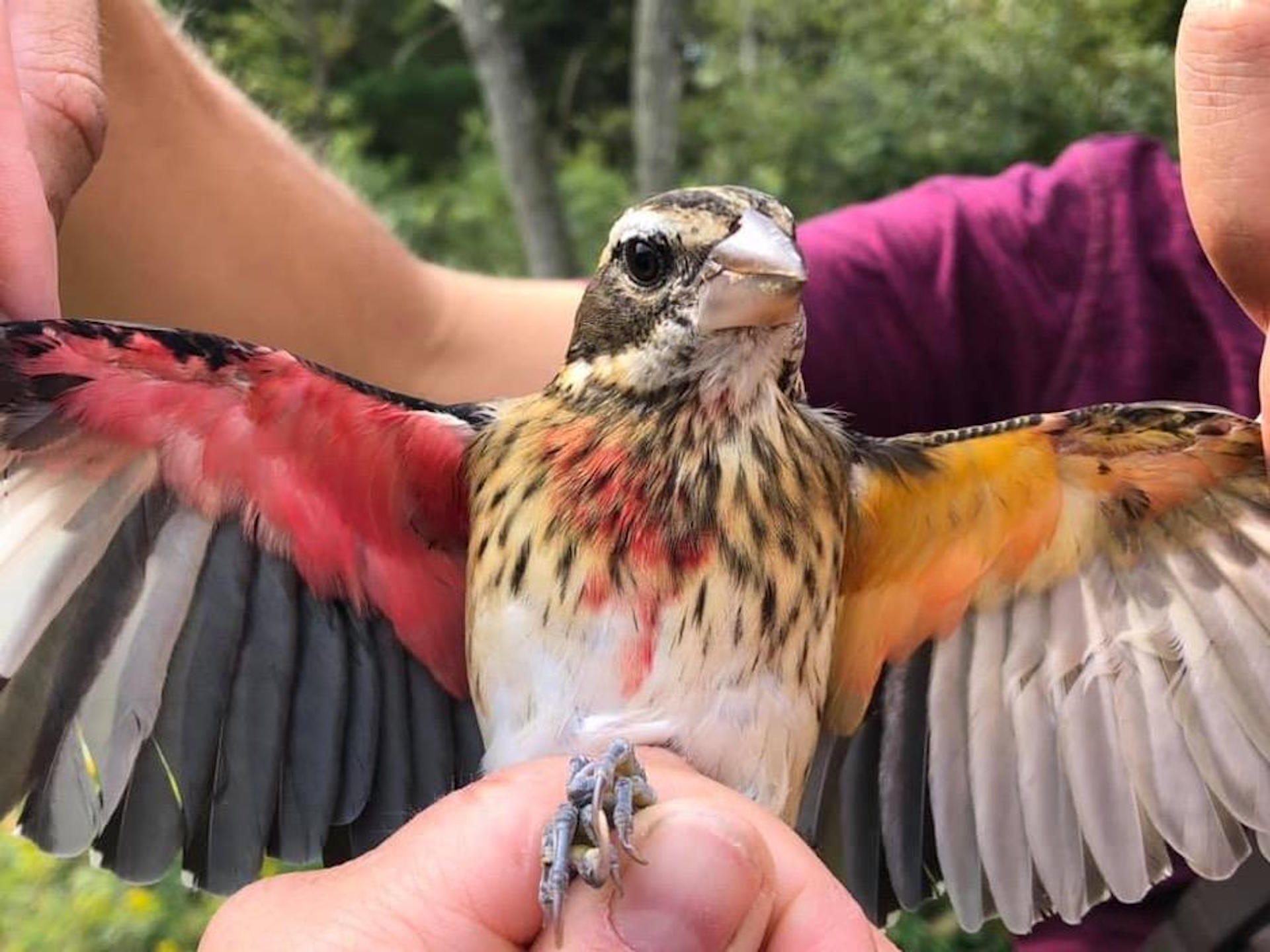
This Rose-breasted Grosbeak gynandromorph bird possesses both male and female physical traits, including different colored wing pits. Male Grosbeak have reddish pits, while females have yellow.
Annie Lindsay / Carnegie Museum of Natural History

This Rose-breasted Grosbeak gynandromorph bird possesses both male and female physical traits, including different colored wing pits. Male Grosbeak have reddish pits, while females have yellow.
Annie Lindsay / Carnegie Museum of Natural History

Annie Lindsay / Carnegie Museum of Natural History
This Rose-breasted Grosbeak gynandromorph bird possesses both male and female physical traits, including different colored wing pits. Male Grosbeak have reddish pits, while females have yellow.
(Pittsburgh) — Researchers at Powdermill Nature Reserve in Westmoreland County have caught a rare bird.
The newly banded Rose-breasted Grosbeak is a gynandromorph, meaning that it is part male and part female. This particular Grosbeak is male on the right side and female on the left, making it a bilateral gynandromorph.

Annie Lindsay / Carnegie Museum of Natural History
This Rose-breasted Grosbeak gynandromorph bird possesses both male and female physical traits, including different colored wing pits. Male Grosbeak have reddish pits, while females have yellow.
Scientists at the Carnegie Museum of Natural History said less than 10 bilateral gynandromorph birds have been documented in the reserve’s 64-year bird banding history. The reserve’s only other documented Rose-breasted Grosbeak bilateral gynandromorph was banded in 2005.
Annie Lindsay, Powdermill’s bird banding program manager, said finding a Rose-breasted Grosbeak gynandromorph is a “once-in-a-lifetime experience.”
“One [of the banding team members] described it as ‘seeing a unicorn’ and another described the adrenaline rush of seeing something so remarkable. They all are incredibly grateful to be part of such a noteworthy and interesting banding record,” said Lindsay in a press release.
The fact the bird is a gynandromorph is discernable to the naked eye as it has physical traits of both male and female Grosbeaks. On the right, male side of its body, it has ruby wing pits and a ruby breast spot, along with black wing feathers. On the left it has yellow wing pits and a brownish, speckled wing.
Scientists said they’re interested to see if the bird will produce offspring, believing it may be possible for the Grosbeak to either produce eggs or inseminate another bird. To father chicks the Grosbeak will likely have to be able to sing like a male to attract mates.
The days of journalism’s one-way street of simply producing stories for the public have long been over. Now, it’s time to find better ways to interact with you and ensure we meet your high standards of what a credible media organization should be.